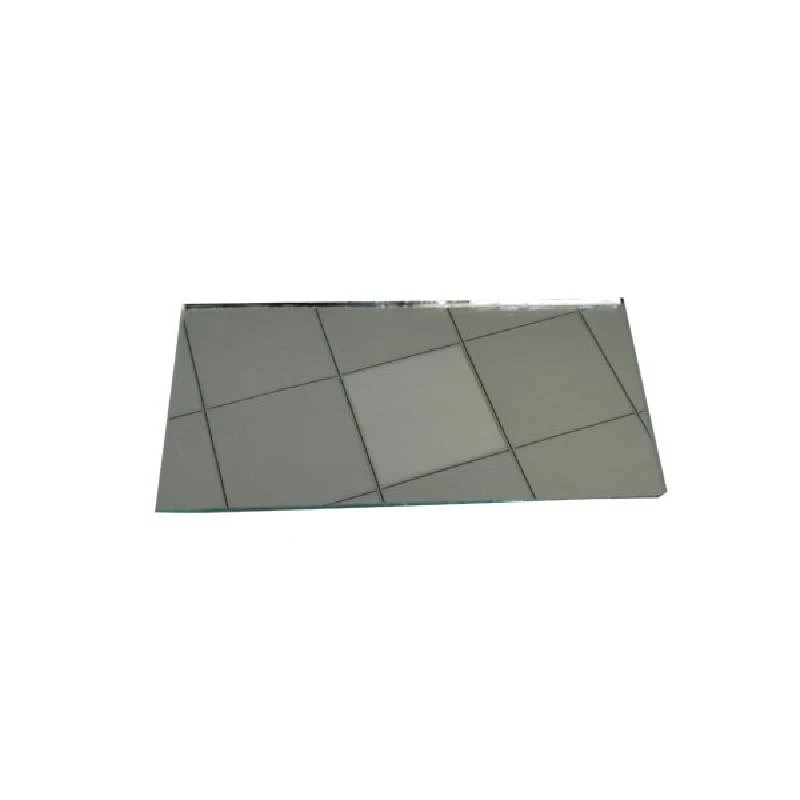Different Types of Architectural Glass A Comprehensive Overview
Architectural glass plays a significant role in modern construction, combining aesthetics, functionality, and sustainability. With technological advancements, architects and designers now have access to various types of architectural glass, each serving distinct purposes. This article explores the different types of architectural glass and their applications in contemporary design.
1. Tempered Glass
Tempered glass is known for its enhanced strength and safety features. It is manufactured through a process of extreme heating and rapid cooling, which increases its durability. In case of breakage, tempered glass shatters into small, blunt pieces rather than sharp shards, reducing the risk of injury. Its strength makes it an ideal choice for large windows, glass doors, and curtain walls. Moreover, tempered glass can withstand high temperatures, making it suitable for facades in regions exposed to extreme weather conditions.
2. Laminated Glass
Laminated glass consists of two or more glass layers bonded together with interlayers of polyvinyl butyral (PVB). This type of glass is notable for its sound insulation and UV protection capabilities. In the event of breaking, the interlayer holds the glass shards together, preventing them from falling and reducing the risk of injury. Laminated glass is commonly used in skylights, glass floors, and safety glazing applications, where both aesthetics and safety are paramount.
3. Insulated Glass
Insulated glass units (IGUs) consist of two or more glass panes separated by a spacer and hermetically sealed to create an air or gas-filled space. This construction significantly improves thermal performance by limiting heat transfer. Insulated glass is widely used in residential and commercial buildings where energy efficiency is a priority. By reducing heating and cooling costs, insulated glass contributes to environmentally sustainable design practices.
4. Low-E Glass
different types of architectural glass
Low-emissivity (Low-E) glass is treated with a special coating that reflects infrared light while allowing visible light to pass through. This coating reduces heat transfer, making Low-E glass an essential component in energy-efficient buildings. It helps maintain indoor temperature, thereby reducing reliance on heating and cooling systems. Architects often utilize Low-E glass for windows and facades to enhance energy efficiency without compromising on natural light.
5. Reflective Glass
Reflective glass features a thin metallic coating that reflects sunlight. This property not only enhances the building's aesthetic appeal but also helps control glare and heat gain. Commonly used in high-rise buildings, reflective glass can create striking visuals while improving energy efficiency. However, it is crucial to consider the implications of glare on surrounding structures and the natural environment when using this type of glass.
6. Frosted Glass
Frosted glass is achieved through sandblasting, acid etching, or ceramic printing, creating a translucent finish that diffuses light while providing privacy. This type of glass is frequently used in bathroom windows, office partitions, and decorative features in architecture. Frosted glass offers a balance between privacy and light penetration, making it a versatile choice for both residential and commercial spaces.
7. Smart Glass
One of the most innovative types of architectural glass is smart glass, which can change its properties based on external stimuli like temperature, light, or electricity. Depending on the technology, smart glass can switch from transparent to opaque, allowing dynamic control of light and privacy. This feature is particularly beneficial in spaces requiring flexibility, such as conference rooms or residential applications. Smart glass promotes energy efficiency by reducing the need for artificial lighting and cooling.
Conclusion
The evolution of architectural glass has transformed the way buildings are designed and constructed. Each type of glass offers unique benefits, catering to the diverse needs of contemporary architecture. From enhanced safety features and energy efficiency to aesthetic appeal and versatility, architectural glass continues to be a pivotal element in creating sustainable and visually striking structures. As technology advances, we can expect even more innovative applications and materials in the realm of architectural glass, pushing the boundaries of design and functionality.
 Afrikaans
Afrikaans  Albanian
Albanian  Amharic
Amharic  Arabic
Arabic  Armenian
Armenian  Azerbaijani
Azerbaijani  Basque
Basque  Belarusian
Belarusian  Bengali
Bengali  Bosnian
Bosnian  Bulgarian
Bulgarian  Catalan
Catalan  Cebuano
Cebuano  Corsican
Corsican  Croatian
Croatian  Czech
Czech  Danish
Danish  Dutch
Dutch  English
English  Esperanto
Esperanto  Estonian
Estonian  Finnish
Finnish  French
French  Frisian
Frisian  Galician
Galician  Georgian
Georgian  German
German  Greek
Greek  Gujarati
Gujarati  Haitian Creole
Haitian Creole  hausa
hausa  hawaiian
hawaiian  Hebrew
Hebrew  Hindi
Hindi  Miao
Miao  Hungarian
Hungarian  Icelandic
Icelandic  igbo
igbo  Indonesian
Indonesian  irish
irish  Italian
Italian  Japanese
Japanese  Javanese
Javanese  Kannada
Kannada  kazakh
kazakh  Khmer
Khmer  Rwandese
Rwandese  Korean
Korean  Kurdish
Kurdish  Kyrgyz
Kyrgyz  Lao
Lao  Latin
Latin  Latvian
Latvian  Lithuanian
Lithuanian  Luxembourgish
Luxembourgish  Macedonian
Macedonian  Malgashi
Malgashi  Malay
Malay  Malayalam
Malayalam  Maltese
Maltese  Maori
Maori  Marathi
Marathi  Mongolian
Mongolian  Myanmar
Myanmar  Nepali
Nepali  Norwegian
Norwegian  Norwegian
Norwegian  Occitan
Occitan  Pashto
Pashto  Persian
Persian  Polish
Polish  Portuguese
Portuguese  Punjabi
Punjabi  Romanian
Romanian  Russian
Russian  Samoan
Samoan  Scottish Gaelic
Scottish Gaelic  Serbian
Serbian  Sesotho
Sesotho  Shona
Shona  Sindhi
Sindhi  Sinhala
Sinhala  Slovak
Slovak  Slovenian
Slovenian  Somali
Somali  Spanish
Spanish  Sundanese
Sundanese  Swahili
Swahili  Swedish
Swedish  Tagalog
Tagalog  Tajik
Tajik  Tamil
Tamil  Tatar
Tatar  Telugu
Telugu  Thai
Thai  Turkish
Turkish  Turkmen
Turkmen  Ukrainian
Ukrainian  Urdu
Urdu  Uighur
Uighur  Uzbek
Uzbek  Vietnamese
Vietnamese  Welsh
Welsh  Bantu
Bantu  Yiddish
Yiddish  Yoruba
Yoruba  Zulu
Zulu 

